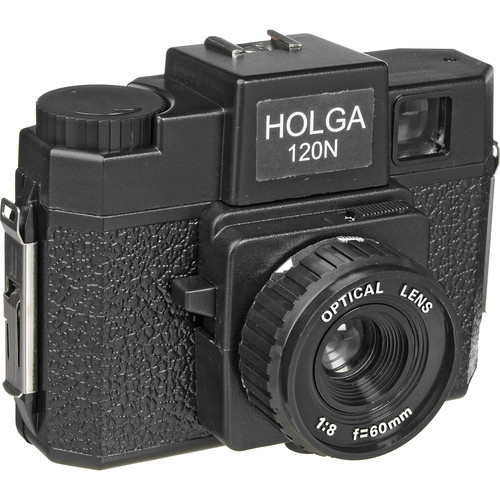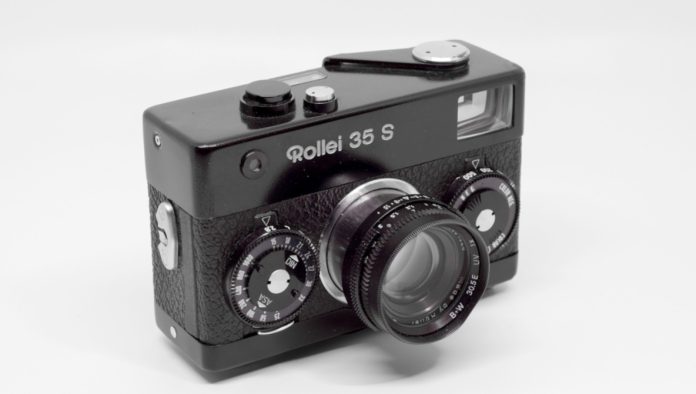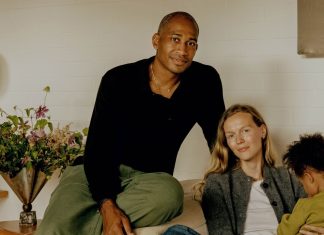Forget megapixels and AF points. This is a list of cameras that deserve your attention not because they’ll make you a better photographer, though they might, but because they represent something pure about the act of making images. They are defined by their unique constraints and the deliberate, often joyful experience they offer. These are cameras worth shooting for the love of the art itself.
1. The Hasselblad 500C/M: The “Slow-Down” Camera
The Hasselblad 500C/M is the iconic, fully mechanical 6×6 medium format SLR that has defined serious photography for generations. Walk into any professional studio from the 1960s through the 1990s and you’d likely find one, though Bronica and Mamiya systems increasingly shared that space through the ’80s and ’90s. The Hasselblad family of cameras, including the specially modified 500EL variants that actually made the trip to the moon, represented the pinnacle of medium format photography. The 500C/M carries that legacy in its mechanical DNA. It’s the camera that captured some of the most important fashion, portrait, and editorial images of the twentieth century. Yet despite its legendary status, or perhaps because of it, the 500C/M remains remarkably accessible to anyone who wants to experience what medium format photography was meant to feel like.
This camera is the anti-digital workflow in every conceivable way. Heavy and completely manual, it announces its presence with the legendary “ka-chunk” of its mirror and shutter. That sound is unmistakable, a mechanical symphony that resonates through your hands and into your chest. It’s the sound of precision engineering, of gears and springs working in perfect harmony. Every photographer should hear it at least once, should feel that satisfying mechanical feedback that tells you something substantial just happened.
The 500C/M forces you to slow down in ways that modern photography has completely abandoned. You check your settings carefully, meter externally with a handheld device, and manually advance the film after each exposure with the side crank. It’s a deliberate, methodical process that feels almost ceremonial. There’s no machine-gunning through a scene hoping one frame turns out sharp. A roll of 120 film gives you twelve exposures. A dozen frames to make count. This limitation doesn’t feel restrictive so much as liberating. You’re not drowning in a sea of nearly identical frames. Each exposure matters.
The square format is revelatory. Composing in a 6×6 square completely breaks your 3:2 or 4:3 habits, forcing you to see the world differently. The square has a unique quality that rectangular formats lack. It possesses a balance, a completeness that feels whole. You find yourself drawn to symmetry, to centered compositions that would feel static in other formats but somehow work perfectly in the square. Buildings, portraits, anything with strong vertical and horizontal elements suddenly makes sense in a way they didn’t before.
But perhaps the most transformative aspect of the 500C/M is the waist-level viewfinder. You compose by looking down into the camera rather than pressing it to your face. The image on the ground glass is flipped horizontally, which initially feels disorienting but quickly becomes intuitive. This strange disconnect forces your brain to engage with composition as a series of shapes and lines rather than just “seeing” the familiar scene in front of you. You stop thinking in terms of subjects and start thinking in terms of forms. A person becomes a shape. A tree becomes a line. Light becomes tangible.
There’s also something wonderfully unhurried about shooting with a waist-level finder. You’re not hiding behind the camera. You’re standing there, looking down, present in the space. Your subjects can see your face. There’s an openness to it, a lack of aggression that changes the entire dynamic of photography. Street photographers have known this for decades. The Hasselblad doesn’t look threatening. It looks beautiful, mechanical, almost like a piece of art itself.
2. The Leica M6: The “Anticipation” Camera
The Leica M6 is the definitive 35mm film rangefinder, combining a mechanical body with a built-in light meter. Released in 1984, it represents the culmination of decades of refinement in the rangefinder system that Leica pioneered. This is the camera that photographers saved for, dreamed about, made excuses to their spouses about. It’s expensive, yes, but using one immediately makes clear why people become obsessed with these cameras. There’s a rightness to a Leica M6 that’s hard to articulate but impossible to miss once you’ve felt it.
The body is compact but substantial. The weight is perfectly distributed. The film advance lever has the smoothest, most satisfying throw of any camera ever made. It’s not just functional, it’s tactile poetry. Every control falls exactly where your fingers expect it to be. The shutter release has a soft, progressive feel that lets you squeeze off a shot without any camera shake. The shutter itself is quiet, discrete, a soft “snick” rather than the mirror slap of an SLR. This is a camera designed to disappear in your hands, to become an extension of your vision rather than a piece of equipment you’re operating.
Instead of looking through the lens, you look through a bright viewfinder with “brightlines” that show your frame. Here’s where the magic happens. You see outside the frame. You watch the world beyond the edges of your composition. You see subjects walking into your shot before they arrive. You see the taxi approaching from the left. You see the dog running into frame from the right. You see the world coming at you rather than just the sliver you’re capturing. This creates a completely different relationship with the act of photography.
Focusing is accomplished by aligning two overlapping “patches” in the center of the viewfinder. It’s a rangefinder mechanism, hence the name, and it feels incredibly fast and intuitive once you develop the muscle memory. In good light, an experienced shooter can focus a rangefinder with a speed that feels instantaneous, even if modern autofocus systems are technically quicker. Your eye sees the misalignment, your fingers turn the lens, the patches snap together. It becomes instinctive. And because you’re not looking through the lens, you never see the world go out of focus. The scene remains sharp in your viewfinder even as you adjust focus. This sounds like a minor detail, but it fundamentally changes how you perceive the act of focusing.
 The rangefinder system encourages anticipation. You’re not just reacting to what you see, you’re predicting what’s about to happen. Because you’re not looking directly through the lens, you feel more detached from the scene. This isn’t a bad thing. It allows your brain to focus on composition and timing without getting lost in the literal view. You become a director rather than just an observer. You see the geometry of the scene, the light, the relationships between elements. You start thinking three steps ahead, seeing shots before they happen.
The rangefinder system encourages anticipation. You’re not just reacting to what you see, you’re predicting what’s about to happen. Because you’re not looking directly through the lens, you feel more detached from the scene. This isn’t a bad thing. It allows your brain to focus on composition and timing without getting lost in the literal view. You become a director rather than just an observer. You see the geometry of the scene, the light, the relationships between elements. You start thinking three steps ahead, seeing shots before they happen.
The lenses are a revelation in themselves. Leica M-mount lenses are legendary for good reason. They’re small, beautifully made, and the glass quality is exceptional. But more importantly, they’re designed for rangefinder use. The focus throws are perfectly calibrated. The depth-of-field scales are clear and accurate. The aperture rings have positive clicks that you can feel and count without looking. This makes zone focusing natural and intuitive. You can pre-focus to ten feet at f/8 and know that everything from seven to fifteen feet will be sharp. You can work this way all day, shooting from the hip, never chimping, never reviewing, just trusting your settings and hunting for moments.
There’s a reason why the Leica rangefinder became the camera of choice for legendary street photographers. Henri Cartier-Bresson built his entire philosophy around earlier Leica rangefinders like the M3, working with their mechanical precision and discretion. Joel Meyerowitz embraced the M6 when it arrived, appreciating how the built-in meter freed him from carrying a separate light meter while maintaining the rangefinder’s essential character. The system is quiet, discreet, and fluid. It doesn’t announce itself. It doesn’t intimidate subjects. It just lets you work, frame after frame, with a fluidity that feels more like sketching than photography.
3. The Holga 120N: The “Anti-Perfection” Camera
The Holga 120N is a plastic “toy” camera that shoots 120 medium format film. Originally sold for around forty dollars, these cameras now often run sixty to ninety dollars new, though used ones remain affordable. It shouldn’t work. By every technical measure, it’s terrible. The lens is soft. The focus mechanism is vague. The build quality is laughable. Light leaks are almost guaranteed. And yet, the Holga has inspired more genuinely creative photography than cameras costing a hundred times as much. There’s something deeply liberating about a camera that refuses to be taken seriously.
This camera is the antidote to pixel-peeping, to lens charts, to endless forum discussions about corner sharpness. The Holga doesn’t care about any of that. It can’t. The lens is molded plastic. The focus is indicated by icons: one person, three people, or mountains. That’s your precision. The build quality is so questionable that many photographers deliberately tape over the seams to prevent light leaks, though others embrace them as happy accidents. It’s all manual, but your control is deliberately limited. You get “sunny” or “cloudy” for aperture (f/11 or f/8) and “normal” or “bulb” for shutter speed (1/100s or however long you hold it open). That’s the entire technical control at your disposal.
What makes the Holga special is that it forces you to abandon all hope of technical perfection. You can’t control anything, so you stop worrying about control. You stop checking your settings obsessively. You stop chimping. You can’t chimp, there’s no screen. You just shoot. When you release your grip on perfection, a shift occurs. You start paying attention to the only thing you can actually control: composition. Light, shadow, form, gesture, these become your only concerns. The camera handles everything else, badly perhaps, but consistently badly, which is its own kind of reliability.
 The images a Holga produces are instantly recognizable. Heavy vignetting darkens the corners and edges, drawing your eye to the center. The plastic lens creates a dreamlike softness that’s sharp enough in the middle to be compelling but never clinical. Colors shift in unexpected ways. Contrast can be harsh or muted depending on conditions you don’t fully understand. And those light leaks, when they happen, can create streaks of color and texture that look like they were added in post-production by a very expensive colorist. Except they weren’t. They’re real. They’re unpredictable. They’re perfect.
The images a Holga produces are instantly recognizable. Heavy vignetting darkens the corners and edges, drawing your eye to the center. The plastic lens creates a dreamlike softness that’s sharp enough in the middle to be compelling but never clinical. Colors shift in unexpected ways. Contrast can be harsh or muted depending on conditions you don’t fully understand. And those light leaks, when they happen, can create streaks of color and texture that look like they were added in post-production by a very expensive colorist. Except they weren’t. They’re real. They’re unpredictable. They’re perfect.
There’s a whole aesthetic movement built around cameras like the Holga. Lomography embraced this celebration of imperfection, turning technical failures into stylistic choices. Fashion photographers used Holgas for editorial work, mixing perfect digital shots with grainy, vignetted medium format frames. Fine art photographers created entire bodies of work with these toy cameras, proving that the tool matters far less than the vision behind it.
Shooting with a Holga is pure joy. It’s photography stripped of pretension. You’re not trying to impress anyone with your gear. You can’t. You’re shooting with a plastic camera that costs less than a decent lens filter. You’re there for the love of making images, for the surprise of getting your film back and discovering what actually happened on those twelve frames. Sometimes it’s disappointing. Often it’s surprising. Occasionally it’s transcendent. And that uncertainty, that element of chance, reconnects you with why you started taking pictures in the first place.
4. The 4×5 View Camera
Whether you choose a vintage Graflex Speed Graphic, a precision-built Sinar P2, or a modern lightweight Intrepid, the 4×5 view camera represents the evolution of photography’s earliest practical form. Before 35mm, before medium format, before miniaturization made photography portable, this was how serious images were made. Sheet film loaded one frame at a time into a bellows camera that demanded patience, skill, and intention. This is photography as a considered, deliberate craft.
The view camera makes medium format feel like point-and-shoot. You work under a dark cloth to see the image, which is projected upside down and backward onto a ground glass screen at the back of the camera. It’s dim under there. Your vision needs time to adapt. You have to really look at what you’re seeing. And what you’re seeing is the actual image that will be captured, projected by the lens, at the exact size it will appear on the film. There’s no viewfinder approximation. This is it. This is exactly what you’re getting.
Every shot is a slow, deliberate, and expensive process. An experienced shooter might set up a shot in five or ten minutes, but the meditative pace often stretches longer as you refine the composition and wrestle with the camera’s movements. You level the tripod. You attach the camera. You roughly compose. You open the aperture wide to see the image clearly on the ground glass. You fine-tune the composition. You adjust the camera movements, tilting and swinging the front and rear standards to control the plane of focus. You reduce the aperture to your chosen f-stop. You meter, either with a handheld meter or a spot meter, taking readings from multiple parts of the scene. You calculate your exposure, factoring in reciprocity failure if it’s a long exposure. You shut the lens. You slide a film holder into the back of the camera. You remove the dark slide. You cock the shutter. You press the cable release to make the exposure. You replace the dark slide. You remove the film holder. One frame complete. That frame just cost you $10 in film and processing. You better have gotten it right.
 This sounds exhausting, and sometimes it is. But there’s also something profoundly meditative about working this slowly. You can’t be impulsive with a view camera. You can’t see something interesting and quickly grab a shot. By the time you set up, the light has changed, people have moved, the moment has passed. So you don’t shoot moments. You shoot things that stay still: landscapes, architecture, still lifes, formal portraits where your subject is willing to wait. You shoot with intention.
This sounds exhausting, and sometimes it is. But there’s also something profoundly meditative about working this slowly. You can’t be impulsive with a view camera. You can’t see something interesting and quickly grab a shot. By the time you set up, the light has changed, people have moved, the moment has passed. So you don’t shoot moments. You shoot things that stay still: landscapes, architecture, still lifes, formal portraits where your subject is willing to wait. You shoot with intention.
The view camera offers control over focus that no other system can match. You physically move the lens and film planes using tilts, swings, and shifts. This is where you learn the Scheimpflug principle, the optical rule that says when the lens plane, the film plane, and the plane of focus intersect along a common line, you can get everything in focus from a flower at your feet to a mountain a mile away. Or you can do the opposite, creating a plane of focus so narrow that only a sliver of your subject is sharp, with everything else falling into soft, creamy blur.
The movements also let you correct perspective. Photographing a building? Shift the lens up instead of tilting the camera, and the parallel lines stay parallel. No more converging verticals. Shooting into a mirror? Use a shift movement to keep yourself out of the reflection. The technical possibilities are endless, limited only by your understanding of optics and your patience.
But beyond the technical control, shooting with a view camera changes how you see. Viewing the world as an inverted, two-dimensional image on the ground glass forces you to stop seeing objects and start seeing pure visual elements. That tree isn’t a tree anymore. It’s a dark vertical form against a lighter background. That building isn’t architecture. It’s a collection of lines and shapes and tones. You stop thinking about what things are and start thinking about what they look like, which is a crucial distinction that separates snapshots from photographs.
The film itself is revelatory. A 4×5-inch negative is enormous compared to 35mm or even medium format. It’s about 15 times the area of a 35mm frame. The amount of information captured is staggering. You can make huge prints with incredible detail. You can crop aggressively and still have resolution to spare. Contact prints from 4×5 negatives, where you just place the negative directly on photographic paper and expose it, are exquisite objects. No enlarger needed. The tonality, the sharpness, the three-dimensional quality of the image is unlike anything you can achieve with smaller formats.
5. The Rollei 35: The “Pure Fundamentals” Camera
My favorite camera. When Rollei released the 35 in 1966, they’d created one of the most compact 35mm cameras ever built. It was a marvel of miniaturization, shrinking a standard 35mm format camera into a body that could slip into a jacket pocket. It’s fully manual, with no rangefinder and certainly no autofocus. Despite its diminutive size, it demands everything from you as a photographer. Nothing is automated. Nothing is easy. And that’s exactly why it’s so rewarding to shoot.
This camera is deliberately fiddly. The controls are small and placed in unusual locations. The rewind mechanism sits underneath the body. The film advance is a wheel on the left side rather than a lever. To focus, you must guess the distance and set it manually on the lens using scale focusing. There’s a distance scale engraved on the lens barrel, but you can’t look through the viewfinder and focus. The viewfinder is separate, showing you only the frame, not the focus. You estimate the distance to your subject, set the focus ring accordingly, and trust your judgment.
This sounds archaic, and in many ways it is. But there’s a purity to this approach that’s been lost in modern photography. You are one hundred percent responsible for the exposure triangle and focus. There’s no computer helping you. There’s no safety net. If the image is out of focus, you misjudged the distance. If it’s overexposed, you chose the wrong settings. If it’s blurred from motion, you didn’t use a fast enough shutter speed. Every decision is yours, and every mistake teaches you something.
The lens on the Rollei 35 is surprisingly good. The more common versions came with a Tessar lens, a classic four-element design that’s sharp when you get the focus right. The premium Rollei 35 S featured a Zeiss Sonnar lens, which was faster and slightly sharper still. The maximum aperture is modest, usually f/3.5 or f/2.8 on the Sonnar, which actually helps with zone focusing. At f/8, you have enough depth of field that your distance estimates don’t need to be perfect. From about six feet to infinity, everything is acceptably sharp. This is zone focusing in its purest form. You’re not focusing on a specific point. You’re creating a zone of sharpness and trusting that your subject falls within it.
The best way to use the Rollei 35 is to pre-set everything and forget it. You look at the light, choose your settings, set your focus zone, and then just hunt for frames. You’re not fiddling with controls when something interesting happens. You’ve already done the technical work. Now you just point and shoot. This pre-setting approach forces you to think about your exposure in advance, to read the light before you start shooting, to commit to technical decisions so your creative mind is free to focus on composition and timing.
Counterintuitively, this makes the Rollei 35 a surprisingly fast street camera. Yes, it’s manual. Yes, it’s fiddly. But once you’ve set it up for the conditions you’re in, you can shoot faster than someone fumbling with autofocus modes and metering patterns. You see something. You frame it. You press the shutter. The leaf shutter is nearly silent. Nobody notices. You advance the film and move on. The camera becomes invisible, which is the highest compliment you can pay to a tool.
There’s also something deeply satisfying about the mechanical nature of the Rollei 35. Every control has a positive, tactile feel. The aperture ring clicks into place. The shutter speed dial turns with precision. The film advance requires just enough pressure that you know when the frame is wound. These small details matter. They make the act of photography physical, tangible, real. You’re not pressing buttons on a touchscreen. You’re manipulating precisely engineered mechanical controls. You feel connected to the process in a way that digital photography rarely achieves.
The Rollei 35 represents photography reduced to its essential elements. Light, composition, timing, and your ability to judge distance. That’s it. No autofocus to rely on. No exposure compensation. No image stabilization. Just you, the camera, and the scene in front of you. It’s challenging. It’s occasionally frustrating. And it’s absolutely worth experiencing, if only to remember that great photographs have nothing to do with technology and everything to do with vision.
Lead image by Lëa-Kim Châteauneuf, CC 4.0 Attribution Share-Alike license.








